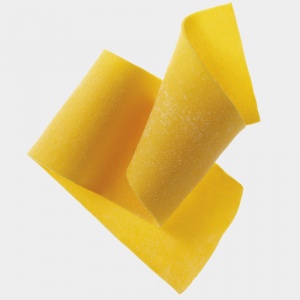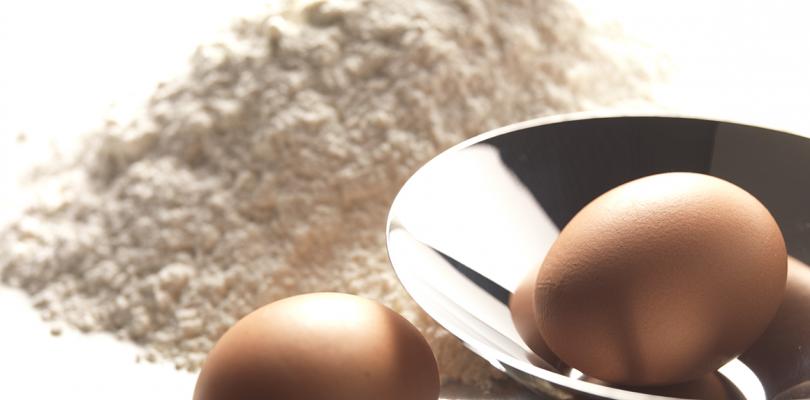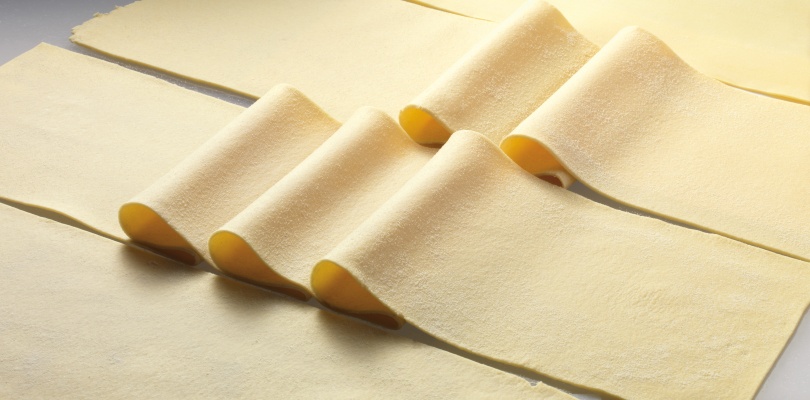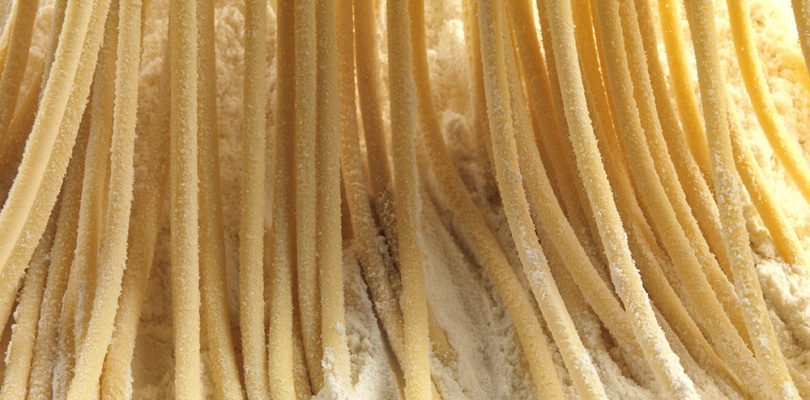
Lasagne
No pasta is more multi-shaped than lasagne. Placed in layers for oven-baked pasta, rolled up for cannelloni or cut into squares for ravioli, tortellini or farfalle.
500g common wheat “00” flour
5 whole eggs and water up to a total of 250g
For tastier pasta, we suggest using a mix of 250g common wheat “00” flour and 250g durum wheat flour (semolina)
Pour the flour into a bowl, then the eggs and water in the middle.
Mix with a fork to thoroughly blend the ingredients with the flour. Do not add salt!
Knead the dough with your hands until it is completely smooth and consistent. Remove the dough from the bowl and place it on a table, lightly dusted with flour.

Set the adjustment knob on a Marcato pasta machine to number 0, so that the two smooth rollers are fully open. Feed a piece of dough through the rollers while turning the hand crank clockwise or after turning on the motor
Lightly dust both sides of the pasta sheet with flour and fold it in half. Feed the pasta sheet through the smooth rollers several times, until it is long and regular in shape.
Set the adjustment knob to 1 and pass the pasta sheet through just once; then, set the adjustment knob to 2 and pass the pasta sheet through once more; then, set the adjustment knob to 3, and so on until you reach the desired thickness.

Insert the hand crank or the motor in the cutting accessory and feed the pasta sheet through the rollers to cut it. Pick up the dough with the stick and transfer it to the Tacapasta.
The pasta dries in about 1-2 hours, depending on the temperature and humidity and can then be stored in suitable kitchen containers.
